
As the first dual-core phone to land at PhoneDog, one would expect that the Motorola Atrix 4G would be the device to have. Sporting a 1 GHz NVIDIA Tegra 2 dual-core CPU (the first cell phone to offer it), 4-inch qHD display with 540 X 960 pixels, front-facing camera for video calling, 5-megapixel rear-facing camera, a biometric fingerprint reader, and Android 2.2, it’s a well-equipped device with a fantastic accessory ecosystem. Sadly, it suffers from quite a bit of lag that’s (likely) brought on by Motorola’s MOTOBLUR user interface. Despite the sporadic speed issues, is it the phone to have this month?
The Atrix 4G comes in a small box with the device, battery, AC adapter module, USB cable, and an HDMI cable, which was a pleasant surprise. The 4-inch qHD display is quite nice, though it’s a bit pixelated in comparison to competing products like Samsung’s Super AMOLED display and Apple’s Retina Display.
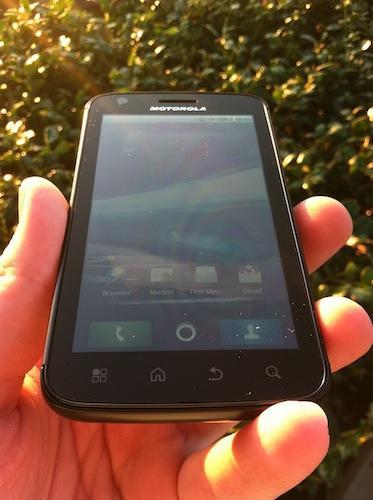
Coming in at 4.77 ounces, the volume rocker is on the right side of the device, while the HDMI and microUSB ports are on the left side. The 3.5mm headphone jack is on the top, and the power button/biometric fingerprint scanner is in an odd position between the top and the back of the unit. While the build quality is tight and well-constructed, it’s mostly plastic, which may turn prospective buyers to the HTC Inspire 4G.
One of the main selling points of the Atrix 4G is the accessory ecosystem. Along with the usual accessories, Motorola has a laptop dock, which allows the user to dock the Atrix and send text messages, browse the web, and manage phone settings from the laptop as opposed to the device. Also available is a media dock, which is self-explanatory. The laptop dock is $399.99, and the media dock is $129.99.
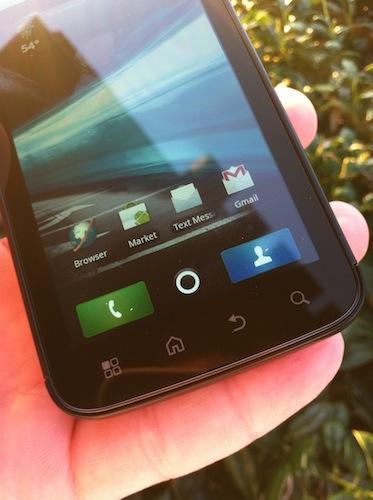
The Atrix 4G is the first mobile phone to be powered by a 1 GHz NVIDIA Tegra 2 dual-core processor. It’s an awesome processor, though Android 2.2’s architecture can’t fully take advantage of it just yet. As if the processor didn’t make it a mobile powerhouse, it packs 1 GB of RAM for good measure, along with Android 2.2. The real Achilles heel comes from MOTOBLUR, Motorola’s custom user interface. I won’t sugarcoat it – MOTOBLUR destroys an otherwise great experience and is likely the culprit behind system issues like the delayed unlock screen and the unresponsive keyboard.
Motorola’s “Applications Platform” – the interface you’ve seen on high-end devices like the DROID 2 and DROID X – isn’t bad at all. It gives their devices a distinct “Motorola” feel and isn’t too intrusive. MOTOBLUR is bloated, unintuitive, and very outdated when it comes to things like the organization of social media mediums. If Motorola insists on sticking with it, it should be on their low to mid-range devices, not the high-end lineup. Despite the lag in select tasks, the Atrix performed well in Quadrant Standard, obtaining scores between 2200 and 2800.
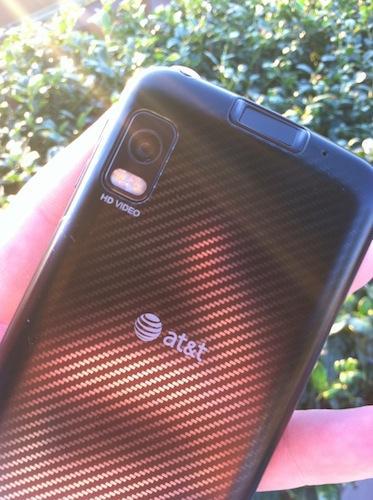
The Atrix 4G has a 5-megapixel camera, and for the most part, picture quality was good. Colors were relatively crisp, even in low-lit situations. Editing options include "scenes" (auto, portrait, landscape, sport, night, macro), "effects" (normal, black and white, negative, sepia, solarize), picture resolution, and more. Video quality was equally decent. I could be off base here, but I find the Atrix’s 5-megapixel camera to be better than the DROID X's 8-megapixel camera. Image quality appears to be better, with richer colors and less graininess in the individual shots.
Motorola has a strong track record with call quality, and the Motorola Atrix 4G is no exception. Calls were clear on my end, and my callers reported the same results, with many questioning whether I was on a cell phone. I tested the Bluetooth with my Plantronics Voyager Pro+ headset (yeah, I upgraded to the plus model), and was very pleased with the call quality. I took the unit to an AT&T dead zone, and despite having no bars of service, was able to hold a (very choppy) call.
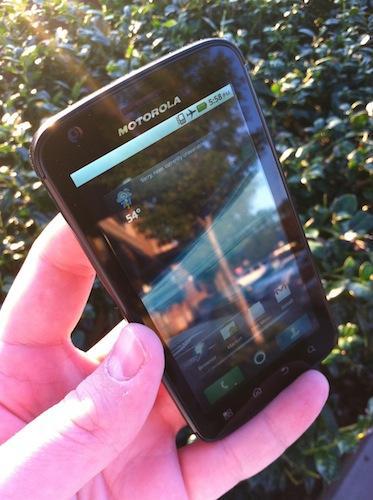
I’m assuming that AT&T hasn’t turned on HSPA+ just yet, as the speed test numbers were on par with the carrier’s HSPA speeds. I averaged download speeds between 1.5 and 2.5 Mbps, and upload speeds between 800 Kbps and 1.5 Mbps. T-Mobile, on the other hand, averages HSPA+ speeds between 4 and 6 Mbps, with upload speeds between 1 and 3 Mbps.
I have been pleasantly surprised with the Atrix 4G's battery. It packs a 1,930 mAh battery, which works well despite Android’s notorious history with poor battery life. With moderate use like calling, text messaging, browsing the web, and downloading apps from the Android Market, I was able to make it through one full day and into the second before the device powered down. If you’re a heavy user, you’ll want to grab a car charger for the road, but light to moderate users should have no issue with battery life.
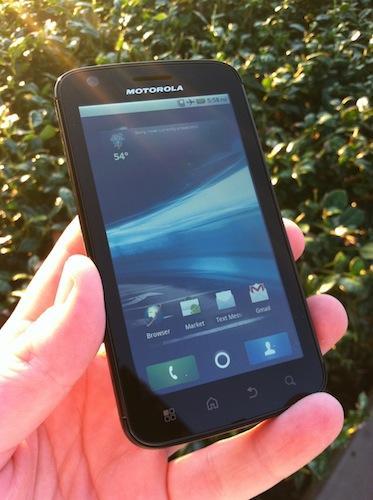
Unfortunately, the Atrix 4G is a fantastic, well-equipped powerhouse that suffers from some lag as a result of MOTOBLUR. I realize it can be found at cheaper prices through non-AT&T channels, but the $199.99 price tag combined with the lag may push users to the HTC Inspire 4G, another great device and another one that supports AT&T’s HSPA+ connectivity. The Motorola Atrix 4G can be had at AT&T retail stores and online for $199.99 with a two-year agreement, or $499.99 with Motorola’s laptop dock (at the time of purchase only).
What’s Good: Specs are excellent; battery life is very good; biometric fingerprint scanner is a cool touch; accessory ecosystem is nice; Motorola’s multitouch virtual QWERTY keyboard is one of the best out there.
What’s Bad: MOTOBLUR virtually destroys an otherwise fast phone.
The Verdict: The Motorola Atrix 4G has a fantastic feature set that’s sabotaged by MOTOBLUR. With a price tag of $199.99 (at AT&T), the HTC Inspire 4G may be the better option.